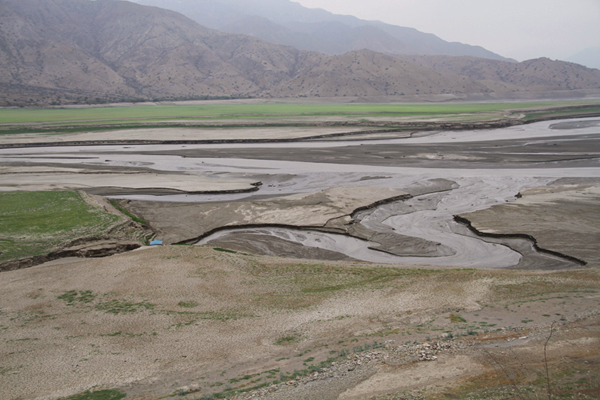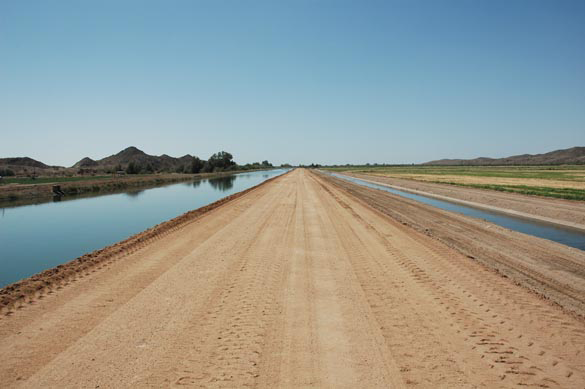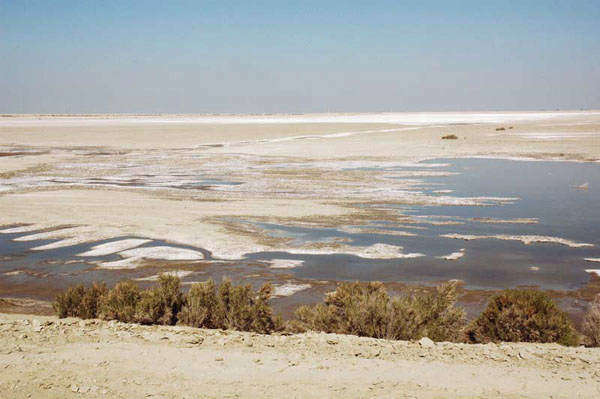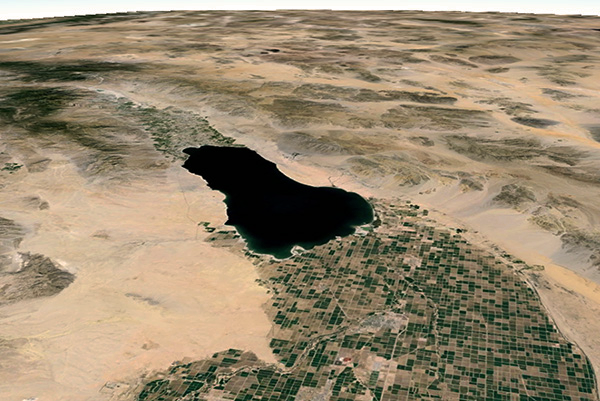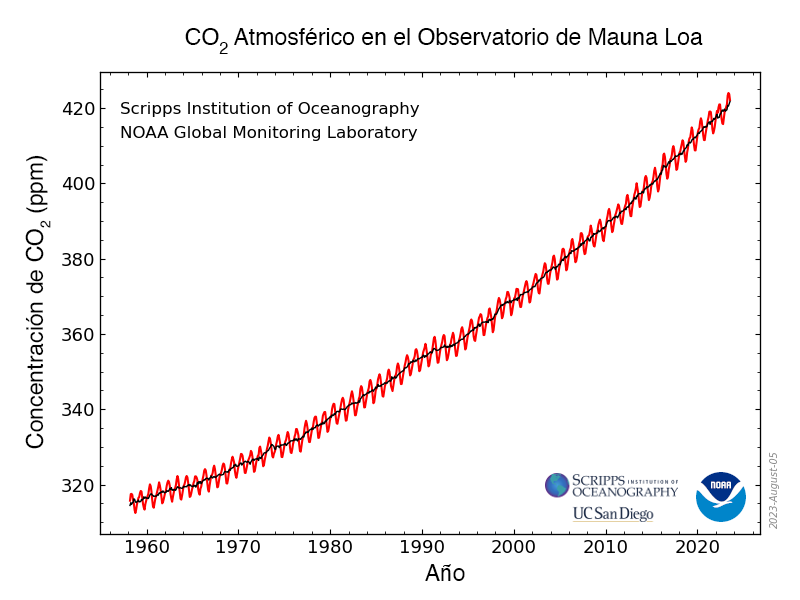TO WIN OR NOT TO WIN: THAT IS THE QUESTION
Professor Emeritus of Civil and Environmental Engineering San Diego State University, San Diego, California
1. TO WIN OR NOT TO WIN
In his seminal work "Discourses on Livy",
written circa 1517,
Niccolò Machiavelli, the famed
Italian writer, saw fit to mention the singular human predicament twice, just in case
his readers missed it the first time. He said: "So in all human affairs one notices,
if one examines them closely, that it is impossible to remove one inconvenience
without another emerging." Later in the book, he reiterated: "In human affairs there is,
in addition to others, this difficulty: When one wants to bring things up to perfection,
one always finds that, bound up with what is good, there is some evil...
and it would seem impossible to have one without the other." We note
the two elements that distinctly show up in Machiavelli's dicta: (1) human affairs, and (2)
the good/bad duality.
Accomplishing good, and winning something from it, material or inmaterial,
invariably requires some action. Nobody ever won anything by sitting still.
Action requires a change in the status quo, typically a development that brings a new idea to fruition.
It is hoped that this development will result in an increase in the quality of life, as defined by
contemporary standards.
Societies around the world employ various types of professionals to assist in materializing the developments
into commercial products and services.
In the remainder of this article, we describe three cases that will endeavor to show that if Machiavelli was not totally right, at least he was pointing in the right direction. This is the true predicament of human society: How to win without losing. To the extent that, so far, we have been largely unable to resolve the issue in a satisfactory manner, the matter remains a thorn in our side.
2. HYDRAULIC ENGINEERING
Contemporary human societies like to wrestle with the weather: It is too cold, or too hot;
too dry or too wet. We recognize the importance of water in all facets
of the human experience but, when choices are made as to where to live, we run from it (the water).
We prefer an arid climate to a humid climate.
The availability of local water varies markedly with weather. A sure indicator
is the duration of the rainy season, measured in number of months per year.
In very arid climates,
this number may be as low as two months,
while in very humid climates it may last twelve months, i.e., all year! Here is where Machiavelli's dicta begin to haunt us. The reservoirs are built ostensibly to store water, but water never occurs alone, i.e., in its pure state (H2O). While flowing on the Earth's surface as it is driven by gravity in the direction of the (nearest) ocean, water has the tendency to pick up solid materials such as sand, silt, and clay. These are the so-called sediments, because they can, and eventually will, settle out of the flow and become sediment deposits. Thus, reservoir design has to contend with the question of how to best manage the sediments, which will be there, whether we like it or not! Removing the sediments by mechanical means does not solve the problem either, because flowing water will always have the capacity to entrain sediments from the surrounding environment to satisfy its transport capacity, i.e., the quantity, or amount of sediment that Nature has determined that it will carry. Thus, it is an established fact, well accepted by hydraulic engineers, that all water reservoirs will eventually fill up with sediments (Fig. 1). The timing will depend on the weather and the prevailing local conditions: In arid climates, the filling could take a year or less, while in humid climates it could take up to hundreds of years!
Thus, the good: The storage of precious water to meet societal needs. The bad: The deposit of sediments in the
reservoirs intented to store water. And here we run into Machiavelli's dicta again!
There is no practical way known to
humans to get rid of the sediment problem altogether.
3. IRRIGATION MANAGEMENT
Most people would regard irrigation as a lofty undertaking. The avowed objective is to
increase the amount of food and fiber available to a growing world
population, which has reached 8,045,000,000 by the middle of 2023.
On the surface, the subject appears clean enough, but there is a problem.
To understand irrigated agriculture as opposed to dryland agriculture,
where farmers do not use irrigation, we must describe the
differences between them, exactly as they occur.
Irrigation may require the transport of water over
long distances, and here is where the plot thickens (Fig. 2).
Water has an innate tendency to pick up solids, both of molecular
and particulate size from coming in contact with the Earth's soil surface.
The water molecule's dipole moment
guarantees the effective entrainment of various chemical components,
among them, typically, the
alkali metal cations
(sodium Na+ and potassium K+)
and the alkaline earth metal cations (magnesium Mg+ and
calcium Ca+)
These four cations are the most common salt cations, together amounting to about 11%
of all the cations present in the litosphere Over the years, irrigation engineers have devised a way of coping with the salt problem. They add a certain amount of water, the leaching fraction, to the potential evapotranspiration needs of the crop in question, to remove the salt out of the root zone and to send it on its way in a downstream direction, by way of drainage. But this only ends up increasing the salt content of the receiving waters, be they surface or groundwater. Effectively, we have "robbed from Peter, to pay Paul..." to paraphrase the popular saying. The anthropogenic salt resulting from the irrigation enterprise adds to the total salt load of the stream. Now, granted, all rivers have a natural salt concentration, which increases as the streams flow downstream from headwaters to ocean (Pillsbury, 1981). But, with the additional salt from irrigation, the concentration becomes larger, taxing the receiving stream and its other uses. If the decision is made not to drain the extra salts produced by irrigation, the only recourse is to collect and store the additional salt in evaporation ponds (Fig, 3). But eventually, these end up contaminating the underlying aquifers and even the neighboring streams receiving the local baseflow (Pillsbury, Extract, 1981). Carting away the salts and dumping them into the nearest ocean proves to be too costly for the typical case. Invariably, the salt comes back to haunt us, no matter how hard we try to solve the problem, confirming once again Machiavelli's dicta.
The case of the Salton Sea, in Imperial and Riverside counties, in California, is a lesson to be learned.
When subjected to irrigation, we note that arid lands such as those neighboring the Salton Sea
generate a greater amount of anthropogenic salt than comparable subhumid lands
(Rhoades and others, 1968).
This is because the soils are relatively new and, therefore, still relatively unleached.
The existence of the Imperial and Coachella valleys
has effectively increased the amount of food and fiber,
and made quite a number of people wealthy in the process, but this has been at the expense of the creation of the Sea.
There appears to be no solution to this veritable dilemma:
In the absence of the Salton Sea (a good thing), the
Imperial and Coachella valleys would not exist!
4. GLOBAL CLIMATE CHANGE The original concept of what we now refer to as global climate change is attributed to the Swedish scientist Arrhenius (1896). He was the first to quantify the contribution of carbon dioxide (CO2) to the greenhouse effect in the Earth's atmosphere. While he did not explicitly suggest that the burning of fossil fuels would cause global warming, it is clear that he was aware that it would constitute a potentially significant source of carbon dioxide.
Global climate change remains
a crucial, existential issue that the world is currently faced with.
Inception. The beginning of global climate change
may be linked to the accomplishments of one person, the American industrialist Henry Ford.
The record shows that Ford never attended high school.
However, at the age of 28,
his proficiency with mechanics helped
him get a job as an engineer with Edison Illuminating Company of Detroit.
And the rest is history... (Wikipedia:
Henry Ford; consulted on August 28, 2023).
With his limited scientific background, Ford was unable to grasp the
consequences of the geological and atmospheric adventure that he, unknowingly,
Growth. Intrinsic to fossil fuels is the issue of time, i.e., geologic time. It took Nature a considerable amount of time, about 360 million years to state current geological knowledge, to put away the surplus organic matter accumulated on the Earth's surface so that our atmosphere could retain a semblance of balance. Too much (contemporary) burning would cause the diatomic molecules in the atmosphere, among them, significantly, carbon dioxide, to increase and lead to warming. Conversely, too little burning would cause the said molecules to decrease and lead to cooling. Like everyone else,
Ford could not have correctly guessed the future. The world population in the year 1900
was 1.6 billion; it is now (2023) close to 8.0 billion, a fivefold increase in the past 123 years!
Maturity. The sustained increase of atmospheric carbon dioxide in contemporary times has been documented by Charles D. Keeling (1928-2005), who, starting in 1959, undertook the measurement of atmospheric CO2 concentration in Mauna Loa, Hawaii (Fig. 5). The Keeling curve, which continues to be plotted to this date (2023) by his son, Ralph F. Keeling, clearly shows the direct relation between the atmospheric content of CO2 and the contemporary burning of fossil fuels. Ostensibly, the latter is largely for the purpose of powering the mechanical devices that have been referred to, since their inception in the early 1900s, as "cars," or "automobiles".
We surmise here that if Machiavelli (1469-1527) had been around at this time,
he would have said, admonishingly:
5. ENVIRONMENTAL IMPACT ASSESSMENT The beginning of the concept of environmental impact assessment goes back to the year 1969, when the United States passed the National Environmental Policy Act (NEPA). It was officially realized at that time, that development projects produced certain unintended impacts on the surrounding environment. Thus, the need arose to evaluate projects carefully, using rational, reproducible methods of analysis, so that the professionals in-charge could determine whether the project was worth pursuing, once the advantages and disadvantages had been clearly identified and compared on a similar basis (Leopold and others, 1971; Dee and others, 1972; 1973). This change in outlook regarding development projects has all but institutionalized the sense of Machiavelli's dicta, bringing into law what had previously been regarded at best as a keen observation. More than 50 years after the passage of NEPA, it is now widely established that the positive and negative features of development projects should be carefully evaluated and compared on a systematic basis, in order to decide whether or not to pursue the projects to their successful completion.
6. EPILOGUE With the need for an environmental impact assessment firmly established in practice, the obvious solution is to broaden the outlook of scientific and professional inquiries to encompass nearly all fields of study. This pursuit entails the interdisciplinary collection of all fields of human endeavor into one distinctly seamless body of knowledge. Here again, Machiavelli's genius reappears to set the record straight. He elaborates: "Men make quite a number of mistakes about things in general, but not so many about particulars." In other words, it is easy for a person to solve a specific problem, but not one exhibiting many angles. To close, it is clear that humanity would be keen to employ a group of its best minds to examine and decide on the much needed sustainable solutions, unarguably those that naturally cover a gamut of fields of human endeavor. REFERENCES
Arrhenius, S. 1896. On
the influence of csrbonic acid in the air upon the temperature
of the ground. Machiavelli, N. ca. 1517. Discourses on Livy (Original title: Discourses on the First Decade of Titus Livy), Mockingbird Classics Publishing, 2015. (Extract). Rhoades, J. D., D. B. Krueger, and M. J. Reed, 1968. The effect of soil-mineral weathering on the sodium hazard of irrigation waters. Soil Science Society of America Proceedings, Vol. 32, 643-647. Leopold, L. B., F. E. Clarke, B. B. Hanshaw, and J. E. Balsley. 1971. A procedure for evaluating environmental impact. U.S. Geological Survey Circular 645, Washington, D.C. Dee, N., J. Baker, N. Drobny, K. Duke, and D. Fahringer. 1972. Environmental evaluation system for water resource planning, Report to Bureau of Reclamation, U.S. Department of Interior, Battelle Columbus Laboratory, Columbus, Ohio, January, 188 pages. Dee, N., J. Baker, N. Drobny, K. Duke, I. Whitman, and D. Fahringer. 1973. An environmental evaluation system for water resource planning. Water Resources Research, Vol. 9, No. 3, June, 523-535. Pillsbury, 1981. The salinity of rivers. Scientific American, Vol. 45, Number 1, July, 55-65. Extract. Ponce, V. M. 2000. Characterization of drought across climatic spectrum. Journal of Hydraulic Engineering, ASCE, Vol. 5, No. 2, April. Ponce, V. M. 2015. The right of Nature to dispose of its salt waste. Online publication. Ponce, V. M. 2019. The properties of water. Online publication. California Department of Fish and Wildlife, undated. Background information on the Salton Sea. Consulted on August 27, 2023. Wikipedia: List of dams and reservoirs in the United States, undated. Consulted on August 26, 2023. Wikipedia: Henry Ford, undated. Consulted on August 28, 2023. |
| 230829 18:00 PDT |

